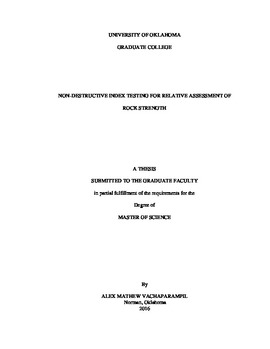| dc.description.abstract | Index tests for the determination of rock properties have been employed since the early 90s, based on methods developed since the 1900s in the metallurgical industry. Examples include the Brinell hardness test, Rockwell hardness test, and the Vickers Hardness test. The use of the Brinell hardness tests gained momentum in the domain of rock mechanics in more recent times in response to increased interest in unconventional petroleum and geothermal resource development. Empirical relationships between various rock properties (UCS, Young’s Modulus etc.) and index tests data have been established, which are frequently used for rapid determination of reservoir rock properties from index tests. The Brinell hardness test has been the most popular of these, perhaps due to its historical prominence in the metallurgical industry since the 1940s. However, the use of the Brinell hardness test for rock is known to have some major drawbacks, it may become “accidentally destructive” if the rock is too soft, or too hard. Moreover, the test has not been standardized for use in rock mechanics, and various different techniques have been used to perform it, resulting in difficulty in comparing readings from different sources. In this study, we carry out Brinell and rebound hardness experiments on a variety of rock types. Both sets of experimental data show a strong dependence on rock textural characteristics. Furthermore, the data demonstrate a strong correlation between the two index test results. Thus, the rebound hardness tests may be used as a direct substitute for the Brinell hardness test, as it is easier to perform, with reduced chances of specimen destruction, and less sensitive to creep effects. In addition, these index experiments have been performed over a variety of rock types to demonstrate its feasibility. | en_US |
